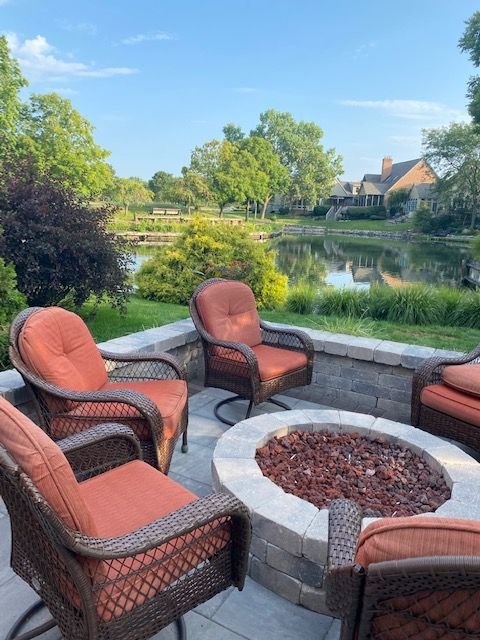Is a Retaining Wall and a Sitting Wall the Same Thing in the Westerville and Dublin, OH Areas?
Is a retaining wall and a sitting wall the same thing in the Westerville and Dublin, OH areas? Yes, and no. Here’s what you need to know about these essential landscape elements.
Related: HERE IS HOW A RETAINING WALL ADDS VISUAL INTEREST TO POWELL, OH, AREA FRONT YARDS
Retaining Walls
Retaining Walls are used as practical solutions to carving out additional outdoor living space, managing sloping landscapes, and preventing erosion. They can be located anywhere in the landscape. When they’re integrated into a patio, retaining walls can take on a lot of wonderful design functions.
A retaining wall can act much like an interior wall, offering visual and physical support to built-in elements such as an outdoor fireplace, water feature, the back wall of an outdoor kitchen, or seating around a fire pit. They can feature niches for artwork, beautiful eye-catching masonry, and a large, generously proportioned capstone that can be used for seating or to display potted plants.
A retaining wall can be short - just like a sitting wall - or, if the need calls for a more robust solution, a retaining wall can be engineered to be as high as 20 feet (most commonly used in commercial situations) or it can be built as a series of terraces (most common in residential applications). A series of terraces not only adds to the useful space on a sloped property, it also helps to soften the look by introducing greenery.
Sitting Walls
Sitting walls are often built along the perimeter of a paver or stone patio to offer overflow seating for guests. This is a great solution if you like to host larger parties, but have limited space or just don’t want to clutter your patio with a lot of furniture. Sitting walls can also be positioned around a fire pit or overlooking an attractive view such as alongside a pond or in front of a waterfall or fountain.
One of the most wonderful features of a sitting wall is that it adds vertical dimension in an otherwise flat space. A ground-level patio that transitions directly into the landscaping has a completely different feel than a ground-level patio that is “embraced” by a sitting wall. Of course the choice is up to you as to which look you prefer. A patio that’s encircled at least partially with a sitting wall will feel like a more deliberate design with clear definition, and sitting walls are short enough to not block the view from anywhere on the patio (even from the vantage point of a lounge chair).
Sitting walls are chair height, with a generously proportioned capstone that’s comfortable to sit on. As seating, sitting walls are always constructed using mortar for strength and stability.
Sitting walls can also be built to integrate into other features such as masonry plant boxes, an outdoor fireplace, or even an outdoor kitchen (to give your guests a place to relax while they watch the action in the kitchen).
Which Is Best?
If you have a sloped property, you’ll need a retaining wall. Seating can either be on top of the wall if it’s short enough, or integrated into the wall if it’s taller.
If you have a flat property, a sitting wall is all you need to add visual interest and practicality to your outdoor living space.
You can, of course, combine the two. A retaining wall can serve as the backdrop for your outdoor living space, and a sitting wall can make up the outer perimeter for added seating and a sense of coziness.
Related: A RETAINING WALL GOES HAND IN HAND WITH A FIRE PIT IN WESTERVILLE, OH

